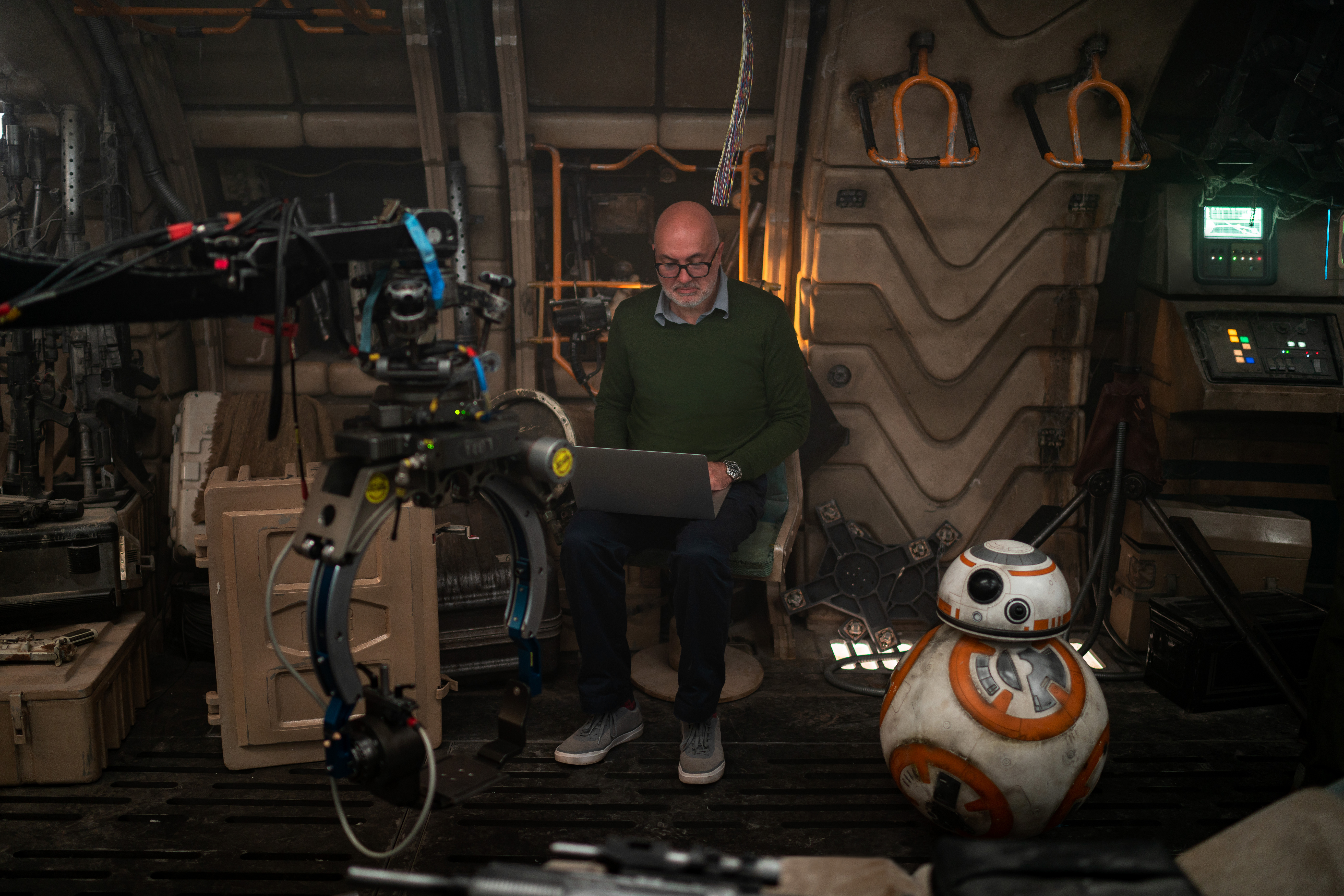How George Lucas’ Ideas Blazed Trails for Dolby Sound Over 40 Years of ‘Star Wars’
By Simon Thompson
LOS ANGELES (Variety.com) – Ever since the fanfare and iconic title crawl of “Star Wars” first burst onto cinema screens in 1977, the dynamic marriage of sound and vision has been the beating heart of the trailblazing franchise. It has also been at the center of a relationship between Dolby and Lucasfilm that spans more than 40 years.
As Stuart Bowling, Dolby’s director of content and creative relations, explains, the relationship dates back to 1977. “We launched the Dolby system, which was known as Dolby Stereo, on 35mm back in 1976 with Barbra Streisand’s ‘A Star Is Born.’ However, when ‘Star Wars’ came out in 1977, being as popular as it was, that’s what helped put Dolby on the marquee and create that demand for the start of surround sound.”
He continues, “Until ‘Star Wars,’ we were working only in stereo, but with surround sound, from that first moment where you get the title crawl, and the Star Destroyer comes in from the top, audiences felt as if it was coming over them, and they were cheering. It became a game-changer from a technological as well as an audience-experience perspective.”
George Lucas was a game-changer using sound in ways that had never been seen or heard before. By the time the director made “The Phantom Menace,” he wanted to advance the sonic format further. Lucas and sound designer at Skywalker Gary Rydstrom wanted to be able to move sound through the room and around the audience.
They wanted to move the sound from front to back or maybe from the screen to the side of the room, something that wasn’t possible to do with Dolby 5.1. The audio requirements of “The Phantom Menace” necessitated the development of a 6.1 sound format, which allowed filmmakers to realistically, acoustically create things like the Pod racing scenes.
Rydstrom explains, “‘The Phantom Menace’ came out after many years of no ‘Star Wars’ films. My thinking was that if we had a new one, let’s push technology and the movie-going experience. Long before we finished the movie, there were talks between our engineers, and THX engineers and me, and a lot of cross-pollination between the companies. It happened later on again with what became Dolby Atmos. It’s a symbiotic relationship with Dolby because we don’t compete. They don’t make movies, and we don’t make sound systems. The two companies really support and benefit each other.”
“The existence of surround sound allows you to make sound a part of a movie that you don’t see. It can be happening around you; you don’t have to show it onscreen. It affects the ability to have a 360-degree circle around an audience and affects how filmmakers shoot movies. The Pod racing in ‘The Phantom Menace’ is a great example; another is when we did ‘Saving Private Ryan.’ The battle scenes are very intimate; they are visually very close on the soldiers, so Steven Spielberg knew that the sound that would surround the audience and could tell them the other parts of the story, the scale of the battle going on around them.”
He adds, “I think as sound technology and creativity change, it does change how films are shot and designed. It’s best when the sound and visuals come at a story from two different angles, tell the same story, but in two different ways as opposed to repeating each other. The best filmmakers do that to this day.”
When J.J. Abrams took the helm with “Star Wars,” it was more a case of getting him in front of Dolby Vision, which allowed images to be projected at over twice the standard brightness level so things like the sun, moon, or stars can be brighter like they are in real life.
Bowling explains, “Dolby Vision came about because there was kind of an arms race going on. We’d gone through digital projection at 720p, and then it went to 1.2K, then it went to 2K, and then it went mainstream. Then we brought in 4K.”
He continues, “Dolby Vision restored the faith of filmmakers that they could still shoot movies [on digital] like they usually would [on film] and fully reproduce the image they captured without compromise. ”
With the “Force Awakens,” there was a much more immersive experience for moviegoers. Additionally, by using Dolby Vision in this trilogy, the lightsabers had much more depth in terms of colors.” Bowling says, “This added to the intensity of the lightsabers as they naturally reflected off the actors in a visually-compelling way.”

